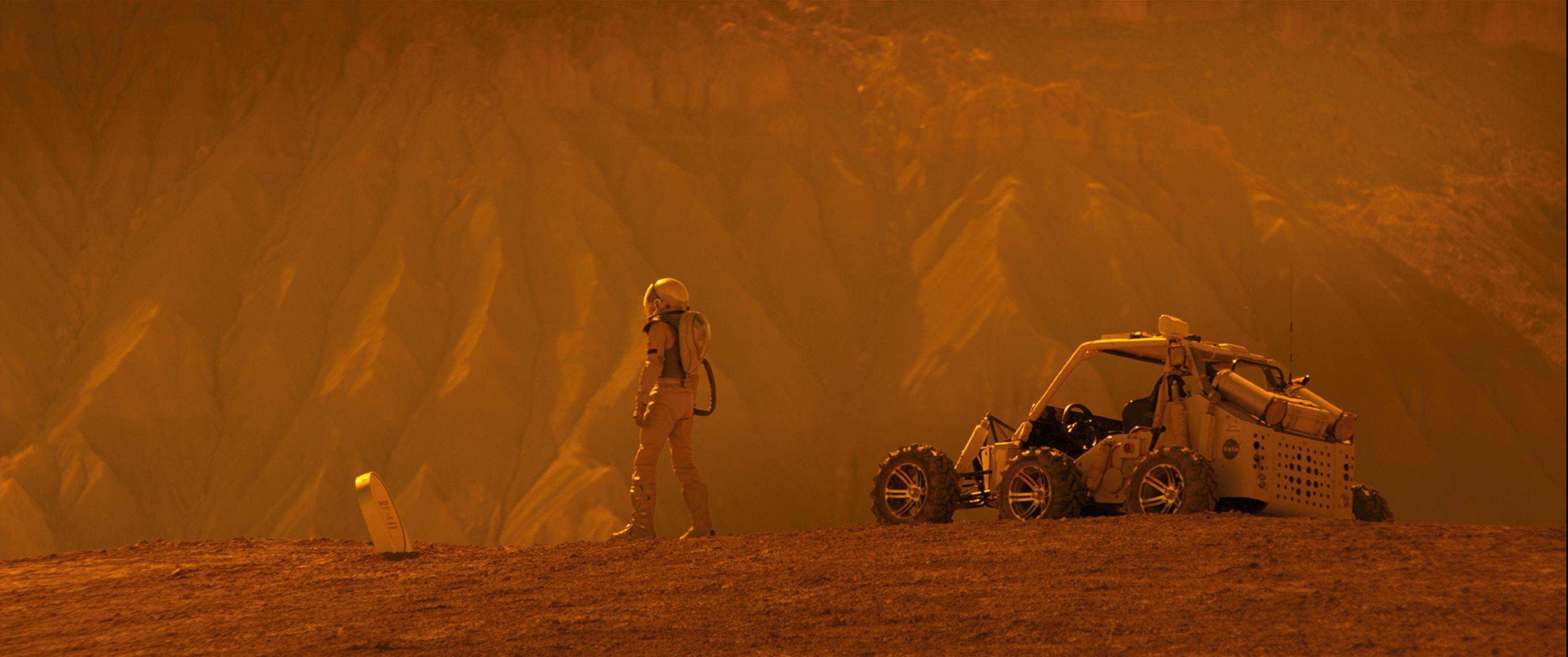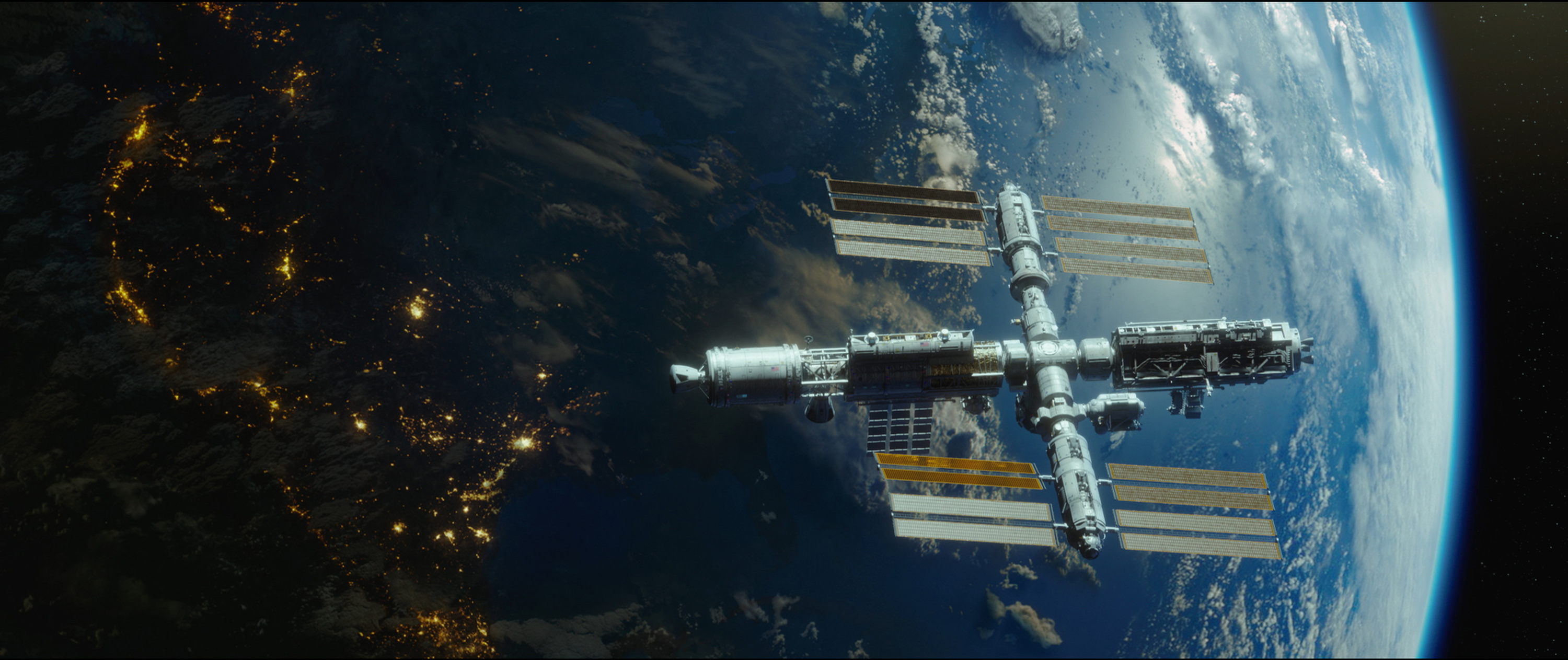'The Space Between Us': The Science Behind the Science Fiction
"The Space Between Us" may be a science-fiction film, but the science behind the story is a lot more factual than it may seem.
The movie tells the story of the first child to be born on Mars, after an astronaut realizes she's pregnant en route to the Red Planet. When the Mars-born boy becomes a teenager, he makes his first journey to Earth. The increase in gravity takes a serious toll on his body, turning his trip into a potentially lethal endeavor.
From the physiology of the human body to interplanetary transport, the science throughout this movie hits the nail on the head. The story may not sound realistic or plausible today, but it's entirely based on events that may very well happen in the future. ['The Space Between Us' in Pictures]
To portray the future of human spaceflight as accurately as possible, the filmmakers consulted with NASA's "Mars czar," G. Scott Hubbard, who spent 20 years working at NASA and was the agency's first Mars program director. Hubbard told Space.com that he gives the filmmakers "a lot of credit for wanting to know the true scientific facts as best as we know them."

Spaceflight
Though the world is still decades away from human missions to Mars, the research and technological development required to make such a journey is already underway. "The Space Between Us" features several spacecraft that either already exist or are currently under development.
One of the movie's spacecraft that could fly in the next couple of years is NASA's Space Launch System (SLS). The rocket, designed to carry humans beyond Earth's orbit, is currently in the development stage and slated for launch in 2018. Its first launch will send an uncrewed Orion capsule on a trip around the moon before launching astronauts on a mission to an asteroid. Ultimately, NASA hopes to use the rocket for missions to Mars and beyond.
In "The Space Between Us," after the astronauts launch atop the SLS rocket, their crew capsule meets up with a spacecraft that looks a lot like the International Space Station. This huge orbiting spacecraft is actually a Mars Transfer Vehicle (MTV), which is based on Lockheed Martin's "Base Camp" design. After the crew docks, the MTV provides the astronauts with a more comfortable enclosure for the seven-month trip to Mars. There, the astronauts ride a descent vehicle down to Mars while the MTV hangs out in Mars' orbit. The MTV is just a concept for now, but it may be how future astronauts travel back and forth between Earth and Mars.
Breaking space news, the latest updates on rocket launches, skywatching events and more!
The filmmakers also got access to a real spacecraft that has already been built (but never flown): a prototype of the Dream Chaser, which looks like a mini version of NASA's space shuttle. Dream Chaser is designed to carry cargo to the space station and can carry up to seven astronauts. The spacecraft has only done orbital test flights so far, but it's scheduled to make its first uncrewed flight to the space station in 2019.

The human body in space
Scientists are constantly learning more and more about how the human body performs in microgravity, thanks to the research done by astronauts aboard the International Space Station. But one facet of this field of research for which there currently is no available evidence is pregnancy. No pregnant astronauts have ever been in space, and that's the main reason this story came about.
Richard Lewis, the film's producer and co-writer of the story, wanted to explore the idea of pregnancy and childbirth in space travel. Lewis told Space.com that, when he called NASA to speak with the experts, the person on the phone asked him, "Have you been listening to our phone calls?" Apparently, this is a big concern for NASA, because there is no protocol for what to do if an astronaut makes the surprise discovery that she is pregnant during spaceflight — a situation in which she couldn't simply turn around and go home. Although it hasn't happened yet, it may happen eventually as humans start traveling to Mars, Lewis said.
Although scientists have no idea how a pregnant woman's body and unborn child would react to microgravity, research done on the space station can paint a picture of how a child's body might develop differently in an environment where there is less gravity than on Earth. Lewis consulted with physicians, flight surgeons, astronauts and Hubbard to get the most accurate representation as possible.
In the film, Gardner Elliot (played by Asa Butterfield) spends the first 16 years of his life on Mars. As a result, he's taller than normal and has thin, weak bones — a real condition known as osteogenesis imperfecta. When he goes to Earth, his enlarged heart has trouble pumping blood throughout his body. This can lead to reduced oxygen flow, Hubbard said. [How Zero Gravity Affects Astronauts' Hearts in Space]
Quantum communication
With today's technology, it would take 7 to 10 minutes for a signal to travel between Earth and Mars. So how can characters in "The Space Between Us" communicate instantaneously? The answer may seem like a bit of a stretch, but don't call it impossible just yet.
The method of communication used in the film is based on a physics concept called quantum entanglement. The idea is that two particles can be linked together and interact instantaneously, no matter the distance between them. Hubbard described quantum communication as being able to send a signal much faster than the speed of light through another dimension. [How Quantum Entanglement Works (Infographic)]
Quantum communication has not yet been proven to work for deep-space missions, but China is already experimenting with communications satellites deployed in Earth's orbit.
For people watching "The Space Between Us" in the modern era, the story is certainly a work of science fiction. But decades from now, it's possible that people will regard it as hard science fiction, or later even historical fiction. It's difficult to judge what the future holds, but the makers of this movie did a rigorous job of portraying these fictional events based on what knowledge and technology exist today.
Email Hanneke Weitering at hweitering@space.com or follow her @hannekescience. Follow us @Spacedotcom, Facebook and Google+. Original article on Space.com.
Join our Space Forums to keep talking space on the latest missions, night sky and more! And if you have a news tip, correction or comment, let us know at: community@space.com.

Hanneke Weitering is a multimedia journalist in the Pacific Northwest reporting on the future of aviation at FutureFlight.aero and Aviation International News and was previously the Editor for Spaceflight and Astronomy news here at Space.com. As an editor with over 10 years of experience in science journalism she has previously written for Scholastic Classroom Magazines, MedPage Today and The Joint Institute for Computational Sciences at Oak Ridge National Laboratory. After studying physics at the University of Tennessee in her hometown of Knoxville, she earned her graduate degree in Science, Health and Environmental Reporting (SHERP) from New York University. Hanneke joined the Space.com team in 2016 as a staff writer and producer, covering topics including spaceflight and astronomy. She currently lives in Seattle, home of the Space Needle, with her cat and two snakes. In her spare time, Hanneke enjoys exploring the Rocky Mountains, basking in nature and looking for dark skies to gaze at the cosmos.
